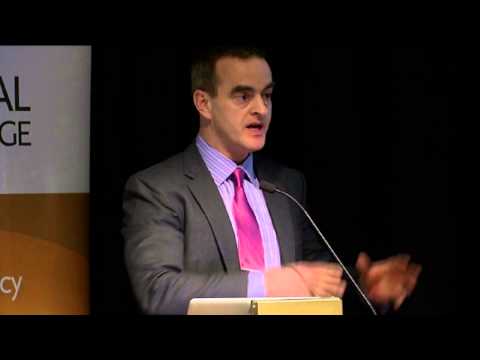This week we wrote a letter to the Minister of Finance and look forward to the response
Dear Mr English
Re The IMF Paper ‘The Chicago Plan Revisited’
Our attention has been drawn to a working paper published on the website of the International Monetary Fund entitled The Chicago Plan Revisited by Jaromir Benes and Michael Kumhof and dated August 2012.
Its abstract reads as follows:-
At the height of the Great Depression a number of leading U.S. economists advanced a proposal for monetary reform that became known as the Chicago Plan. It envisaged the separation of the monetary and credit functions of the banking system, by requiring 100% reserve banking for deposits. Irving Fisher (1936) claimed the following advantages for this plan:
(1) Much better control of a major source of business cycle fluctuations, sudden increases and contractions of bank credit and of the supply of bank-created money.
(2) Complete elimination of bank runs.
(3) Dramatic reduction of the (net) public debt.
(4) Dramatic reduction of private debt, as money creation no longer requires simultaneous debt creation.
We study these claims by embedding a comprehensive and carefully calibrated model of the banking system in a DSGE model of the U.S. economy. We find support for all four of Fisher’s claims. Furthermore, output gains approach 10 percent, and steady state inflation can drop to zero without posing problems for the conduct of monetary policy.
(There has also been a recent paper from the Bank of International Settlements site by the economist Borio http://www.bis.org/publ/work395.pdf, which calls for a rethink of the business cycle model and for significant adjustments to macroeconomic policies, and to an article in the Economist Dec 14, 2012, discussing that paper at http://www.economist.com/blogs/freeexchange/2012/12/reforming-macroeconomics)
We therefore ask you, as Minister of Finance:-
a) Are you aware of the existence of the IMF paper, the Chicago Plan Revisited?
b) Does your government agree that the four results outlined in this paper are desirable?
c) Does your government support the method used to achieve these four goals?
d) If you differ from the method outlined in the paper to achieve these four goals or argue with it in any way, could you outline your disagreement and how would you achieve these goals differently?
Yours sincerely
Deirdre Kent and Phil Stevens
New Economics Party

